5 Exercises FFs Should NOT Do & What To Do Instead – Part 3
The Situp
This exercise has been around for a long time. You’ve likely done them a gazillion times throughout your adolescence in your physical education classes and in sports practices. So it’s hard for people to accept that they’re not really a very good exercise. Change is always hard.
But I promise you: sit-ups suck. You’re only working your abdominal muscles during a small part of the “up” phase and the entire motion is just priming you for a herniated disc.
Beware Of The Disc!
Firefighters beware! As you probably know, back injuries are the most common injury experienced by firefighters and herniated discs top the list for most frequent type of back injury. So don’t do anything voluntarily that is asking for a herniated disc…I don’t care how long you’ve been doing sit-ups!
See, the motion that your spine does when executing a sit-up puts your inter-vertebral joints in a dangerous position. An inter-vertebral joint is where two vertebrae connect, and there’s a squishy disc between the vertebrae. When your spine flexes (bends in the forward direction) it pinches the front side of the two vertebrae together, causing a pressure that pushes the disc backward and out of it’s place. Imagine pinching one side of a jelly donut – the jelly would then squish out the other side.
There’s cartilage there to keep the disc from completely coming out of it’s place (herniating), but you weaken that cartilage every time you do the exercise. There’s plenty of ways to work your abdominals without flexing the spine.
Do This Instead – The Plank
My favorite is the plank exercise seen in the picture below. Simply keep your back straight – don’t let it sag, and hold as long as you can. Come down if you feel any pain. Beginners can start on their hands and knees in a half plank, then progress to hands and toes, and finally to the hardest position, which is elbows and toes.
Read the complete series here:
5 Exercises FFs Should NOT Do & What To Do Instead
Part 1: Introduction
Part 2: Extensions & The Superman
Part 3: Sit-Ups & The Plank
Part 4: Calf Raises & Box Jumps
Part 5: Extreme Twists
Part 6: Hamstring Stretches

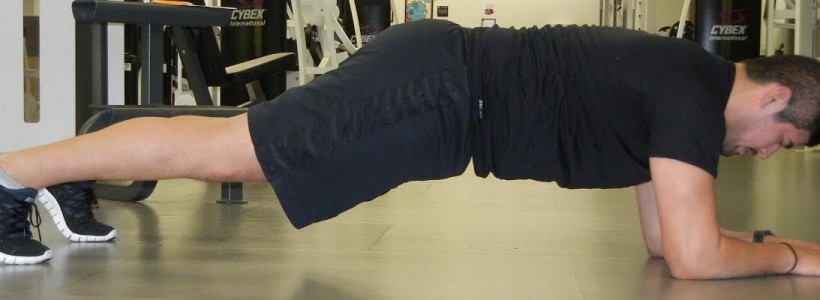
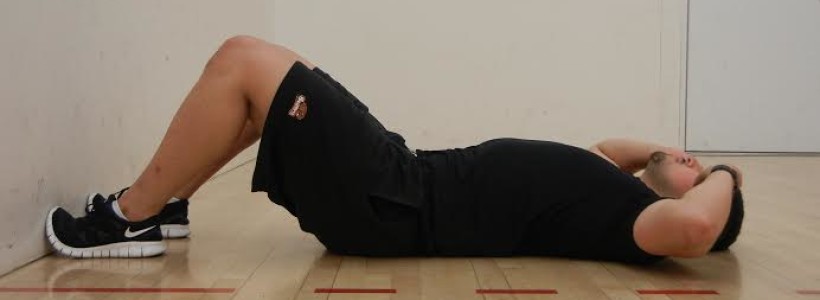

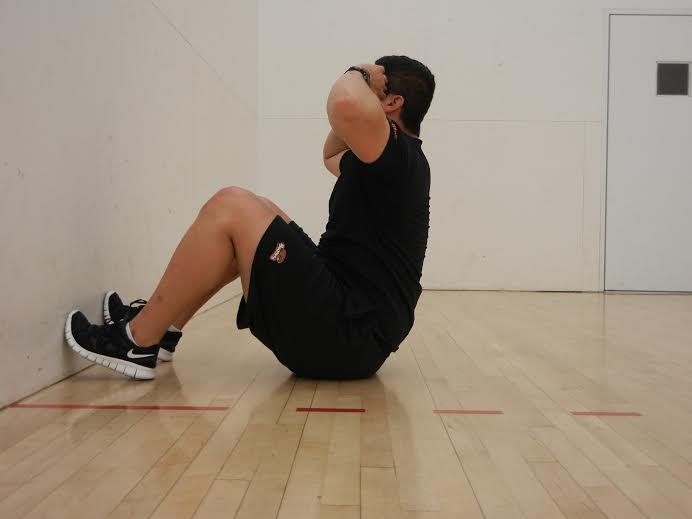

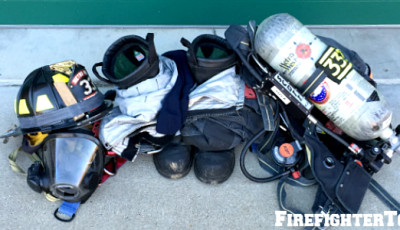
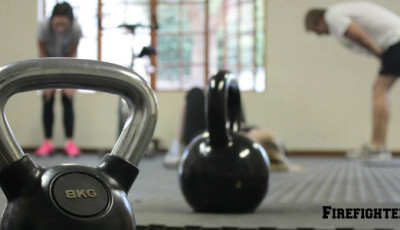

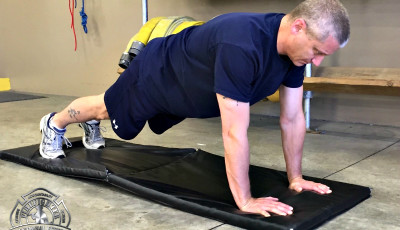




Pingback: 5 Exercises FFs Should NOT Do & What To Do Instead – Part 4 | FireFighterToolBox
Pingback: 5 Exercises FF Should NOT Do & What To Do Instead – Part 5 | FireFighterToolBox
Everyone should be looking at this excellent information for when doing our excercises; thanks sincerely for sharing this information. All the very best of health long term Gordon
You’re welcome Gordon, I’m so glad it’s helped you!
Dr. Moore,
Regarding the plank in place of the sit-up: what is a measureable way to perform the plank in place of the sit-up? I.e. for out PT test we do semi-annually we use one of the exams from the Cooper Institute out of Dallas, Texas, in which the firefighter performs as many sit-ups in 60 seconds as possible. Is there a way to correlate that to the plank? If so, how?
Also, with the sit-up examination, some people sit-up with “good form” (if you can call it that). That is, they don’t bounce, don’t pull on their neck, etc.; they don’t “cheat.” In what way can the plank be taught so as not to “cheat” and increase the likelihood for injury during a testing process?
Thank you,
Ryan Volk
Firefighter/Paramedic
Newton Fire Department
Newton, IA
Hi Ryan, I’m happy to send you my norms for the plank test so your firefighters can perform the test for time and see how that compares to the general population and to other firefighters. I’m actually working on a manual to instruct people how to do my complete firefighter fitness test which will hopefully be for sale (and very affordable) on my website by the end of the year. http://www.fitfordutyconsulting.com
The test is performed on the elbows and toes. Firefighters must keep their back straight and not let their hips creep up or sag. If they do so, I tell them to straighten out. If they feel back pain they should come down. The maximum time or the “cutoff point” is 3 minutes. If you send me your email address I will send you some norms.
Dr. Moore, my email is [email protected]. Thanks for you quick response and advice.
Can you give any other ab exercises besides the plank?
Is any form of the sit up bad? Like straight leg sit up, where your legs are on the ground and you’re only coming up a few degrees?
Or the crunch where your knees are a more flexed and you’re starting from the seated position and coming back (not to the floor)
Can’t just leave me hanging with the plank, I need some variety! :P
Hi Theresa, sit-ups are bad but crunches can be done in a safe and effective way. As you do them, focus on contracting your abs to lift your shoulders off the ground. There shouldn’t be much movement. The problem with these is that we lose focus and get tired and end up just thrusting our torso off the ground using other muscles,, making the exercise less safe and less effective.
If you are starting from a seated position and leaning your torso back and holding (this is a “boat pose” in yoga) then that is great as long as your lumbar spine stays in a neutral position – so don’t let it round out.
You can also do leg lowers (but not leg raises). Lie down on your back with your legs up so your feet are facing the ceiling and contract your abs (like sucking your belly button into your spine so most of your low back touches the floor). Slowly begin to lower your legs. Once your back starts to arch, the exercise is putting a lot of strain on your spine so only lower until that point. Bend the knees, bring the legs in and repeat.
Have fun!
What about flutter kicks, leg lifts and the like? Am I likely to risk similar or the same injuries with these exercises?
As long as you’re not letting your back arch and keeping your abdominals engaged, flutter kicks are great. I would recommend leg lowers over leg lifts as they are just as effective but have less potential for you to arch your back and stress the vertebrae too much. See my description in the comment above.
I’ve heard these criticisms regarding these excercises since I started working with athletes in ’97. Even jumping on the silly stability ball band wagon. A few things I noticed regarding these excercises and the people that seemed to be injured from them were: improper execution of the movement, poor coaching of the movement by the “professional”, and rushing through the progression of the exercises including doing too many reps, using too much weigh and moving too fastt. The anatomical and mechanical concerns regarding these movements are not unique to situps and back extensions. The stresses and torques these exercises create exsist in daily and job related activities as well.
Once I learned how to perform, teach, and progress these movements my athletes and my personal firefighting performance improved significantly and amazingly back aches have gone away. Planks and supermans are great exercises, but where does the progression go from there? Crunches are ok, but do they teach the “core” (hips and abdominal musculature) to work together? Though not scientific, its worth noticing that some of the strongest and fittest athletes (weightlifters, powerlifters, & cross fitters) do not do much plank and superman but have progressed into advanced versions of situps and back extensions.
My perspective on the “demonizing” of potentially great exercises.
There are lots of great progressions from planks and supermans! Most firefighters are not power lifters and elite athletes; they’re normal people trying to avoid injury and have a pain free retirement. It’s more practical to advise firefighters to do exercises that are (effective but) not potentially damaging to the spine as opposed to exercises that must be done in a very specific, meticulous way that would require hiring a strength coach.
Agreed. We are all hoping for a healthy retirement. Yes there are progressions with the exercises mentioned (pike holds, rollouts; not sure about the superman that doesn’t involve a circus stunt on a stability ball.) But like situps and back extensions improper performance and coaching can lead to injury. An individual does a plank and doesn’t understand how to do a posterior tilt of the pelvis and stays anteriotally tilted. Injury potential? With this thought, is the plank a truely safer alternative? I’ve seen plenty of newbies and advanced level athletes not understand how to position the pelvis and stay sway backed. This goes back to my main point of there are no bad exercises or exercises to avoid. Just bad technique, coaching, and progression (I’m not anti plank or superman by the way just anti-small tool box).
No we are not elite athletes, but we have to do elite level exertion. Particularly in rescue situations. Why not learn from the strongest and fittest? Since a healthy retirement is the goal of all firemen; we need to follow an effective fitness program, implemented by a competent coach/trainer.